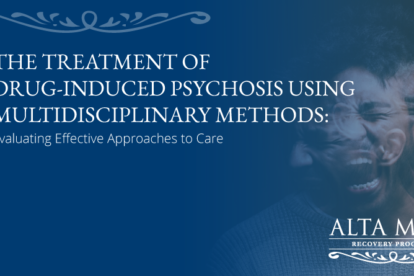
Avoidant Personality Disorder and Drug Addiction
Avoidant personality disorder (AVPD) shares many qualities with the disease of addiction. Both conditions involve problematic ways of negotiating feelings of inadequacy, low self-esteem, shame, loneliness, and fears of rejection, abandonment, and engulfment. A person with AVPD is more likely to engage in substance use to cope with such feelings, and a person with an addiction is more prone to habitually avoidant behaviors. Managing these conditions can be terrifying for a person with avoidant personality disorder, but it is greatly facilitated by an understanding of co-occurring disorders, of how emotions work, and of how to assess risk for maladaptive behavior. Treatment of both conditions can involve cognitive behavioral therapy, group therapy, or other types of interventions geared at developing a more positive self-concept and maintaining trust with another person despite self-perceptions of unworthiness.
What Is Avoidant Personality Disorder and Drug Addiction?
Avoidant Personality Disorder (AVPD) is a long-term pattern of behavior characterized by severe social anxiety, a strong fear of rejection, pervasive feelings of inadequacy, and social inhibition and isolation, all despite a desire for intimacy and relationships. AVPD is considered one of the Cluster C personality disorders in which anxiety or fearfulness are the defining characteristics. The primary coping strategy for people with AVPD, as suggested by the name, is to strenuously avoid interactions that cause fear, unless they can extract guarantees from others that they won’t be rejected.
Addiction is also a problematic long-term pattern, and it is foremost characterized by the loss of control over one’s use of a substance or over one’s engagement with an activity. It is a disease of the brain in which actions are compulsively taken to obtain rewarding stimuli, despite negative consequences.
Facts and Statistics about Drug Addiction and Avoidant Personality Disorder
The American Psychiatric Association (APA) estimates that about 2.5 percent of Americans have been diagnosed with AVPD, and per the National Survey on Drug Use and Health (NSDUH), approximately 10 percent of Americans have been diagnosed with a substance use disorder.
When mental health conditions and substance use disorders coexist in the same individual, the conditions are referred to as co-occurring disorders. According to the National Institute on Drug Abuse, or NIDA, about 38 percent of the population with a substance use disorder has a co-occuring mental health condition, and about 18 percent of those with any mental health condition have a co-occurring substance use disorder.
AVPD and addiction display this type of bidirectional co-occurrence: that is, personality disorders like AVPD are very common in those who suffer from addiction, and substance use disorder rates are very high in those who have been diagnosed with AVPD. Some studies demonstrate that personality disorders are about twice as likely in those who have an addiction than in those who are not addicted.
Symptoms and Diagnosis of Avoidant Personality Disorder
The symptoms and criteria for diagnosing AVPD are found in the American Psychiatric Association’s Diagnostic and Statistical Manual of Mental Disorders, 5th edition (DSM-5). Four of the seven criteria must be met to make the diagnosis. Summarized here, a person with AVPD:
- Avoids occupational activities involving significant interpersonal contact due to fears of criticism, disapproval, or rejection
- Is unwilling to get involved with people unless certain of acceptance
- Shows restraint within intimate relationships due to fears of shame or ridicule
- Is preoccupied with fears of receiving criticism or rejection in social situations
- Is inhibited in new interpersonal situations due to feelings of inadequacy
- Considers self as inferior to others, socially inept, or personally unappealing
- Is unusually reluctant to take personal risks or to engage in any new activities because they may prove embarrassing
Symptoms and Diagnosis of Substance Use Disorders
The term “addiction” is not used in the DSM-5; instead, the term “substance use disorder” describes a spectrum of behavior from misuse of a substance to abuse, to psychological and physical dependence and beyond. Two of 11 criteria must be met to be diagnosed with any degree of substance use disorder, and six of 11 criteria must be met to demonstrate a severe substance use disorder. A severe substance use disorder can be considered, for most intents and purposes, to be synonymous with addiction. Those criteria include:
- Substance or drug use for longer than in intended or in larger amounts than intended
- Unsuccessful attempts to stop using the substance or drug or cut down its use (or persistent desire to do so)
- Spending great time and resources engaged with the drug, using it, or recovering from its effects
- Cravings for the drug
- Continued use of the substance or drug despite negative social and interpersonal consequences directly resulting from such use
- Continued use despite known physical or psychological harm directly resulting from such use
- Recurrent use of the substance or drug in risky or hazardous situations
- Recurrent use of the drug resulting in loss of function at school, home or work.
- Reducing or stopping important activities due to substance or drug use
- Tolerance: the same amount of substance or drug, over time, produces less effect, or it takes more to substance or drug to produce the same effect.
- Withdrawal: experiencing symptoms typical of the substance’s withdrawal syndrome
Hope is Just a Phone Call Away
866-922-1350Causes and Risk Factors for Co-Occurring Avoidant Personality Disorder and Addiction
Like with other Cluster C personality disorders, AVPD stems from the overuse of fear as a coping mechanism for social and interpersonal engagement, so understanding the role of fear is important for a thorough understanding of AVPD.
Fear is a natural emotion that is necessary for survival. It helps all animals, including humans, assess threats in their environment and react accordingly. Along with joy, sadness, anger, disgust, surprise, anticipation and trust, fear is one of eight primary emotions that many psychologists believe are hardwired into everyone (some psychologists also include other emotions like shame and interest in this set of primary emotions, and some explain them with different theories altogether). Similar to primary colors, primary emotions have their own degrees of intensity and can blend with other primary emotions to create more complex combinations of emotions.
In AVPD, fears have much more intensity than normal, and the avoidance, isolation, and inhibition demonstrated in symptoms of this disorder are all coping mechanisms for dealing with such intensity. Whereas a social situation like attending a party may cause tension or skittishness for many people, those with AVPD may be mortified or panicked by the prospect of attending and take extreme measures to ensure they don’t go. Underlying such fears in someone with AVPD may be core beliefs like “if they see who I really am, I’ll be unwanted and unloved.” Core beliefs like these lead people with AVPD to interact with others in a way that confirms the negative things they already believe about themselves, thus maintaining a “vicious cycle” of internal thoughts and behavior patterns. They may drink alcohol or take substances to increase self-worth, to get temporary euphoric escape from feelings of inadequacy, or to try to overcome inhibitions to attempt to engage in closer relationships. Unfortunately, the destructive consequences from problematic substance use can retrigger the very feelings those with AVPD were trying to overcome.
People suffering from addiction may also suffer symptoms similar to those of AVPD. The patterns of behavior in active addiction often involve avoidance of responsibilities (like paying debts or maintaining friendships), avoidance of interpersonal conflict (leading to passive-aggressive behavior), shame, and a feeling of inadequacy. People with addictions can be paralyzed by fears of abandonment, loneliness, or ridicule and tailor their behavior patterns over time to minimize the risk of exposure to such fears.
Drug Addiction and AVPD Prognosis
The emotion of fear is shaped by reason and by learning, and thus fears can become “rational”—in response to a threat or danger that has been assessed as reasonable based on past experiences or by a lack of reassuring information about the level of threat—or can become “irrational,” either not based in reason or out of proportion to the actual threat. Persistent irrational fears are called phobias, and many healthcare professionals consider avoidant personality disorder a type of social phobia.
The ability of humans to modulate fear through learning and through cognitive reasoning makes cognitive behavioral therapy, or CBT, a very effective treatment for both avoidant personality disorder and for addiction. CBT is a type of psychotherapy that helps identify problematic behavior patterns. In CBT, participants will closely examine the thoughts, feelings, and actions that make up these behavior patterns and, with guidance, look for ways in which they can be reconsidered or reimagined. CBT involves confronting previously unexamined, reflexive thoughts (“automatic thoughts”) and gently challenging clients to consider other possibilities.
It is this process of challenge that allows people who engage in CBT to often become able to root out “vicious cycle” thinking patterns. For example, when there is an automatic belief that “things never work out for me,” a person may preemptively withdraw from potentially healthy activities, relationships, or experiences because of the belief that they will result in failure, and the withdrawal from them creates a sense of shame or embarrassment that in turn reinforces the belief that things will “never work out.”
Case reports and smaller studies of less rigorously researched techniques suggest that metacognitive interpersonal therapy and emotionally focused therapy are especially helpful when AVPD and addiction co-occur.
Twelve-step-based therapy remains a staple of addiction treatment, but it can also help address avoidance behaviors. Some 12-step-based literature asks participants to include instances of avoidance and fear in their work on Step 4 (“made a fearless and searching moral inventory of ourselves”). In these books, the goal is to have people take a more balanced approach to their self-appraisal; rather than being ashamed about the times they were paralyzed by fear or avoided responsibility, participants are also asked to recall times when fear helped protect them from danger or when they assumed responsibility.
When healing from co-occurring addiction and avoidant personality disorder, many approaches can be utilized, sometimes in combination with each other. Residential drug addiction treatment and therapies can be tailored to include individual, group, and self-directed learning experiences. They should involve management of withdrawal when necessary and always involve a long-term care plan. The conditions of AVPD and addiction, like all chronic conditions, can be managed successfully, and those with AVPD and addiction can live fulfilling, rewarding lives.






